Meet the MEng students behind the Sports Tech Affinity Group
Anna Wolfe, MEng ’21 (ME/Biomechanics), and Matthew Mesman, MEng ’21 (ME/Product Design) on their paths to the MEng program, what interested them in the sports tech field, and what the group has been working on this semester.
This year, our MEng career development team launched the creation of 14 student-led affinity groups where students could come together and form communities based on their technical and social interests, giving them the space and initiative to learn and connect with their peers and the wider community. The groups’ focuses range from Product Management to Social/Environmental Justice to Computer Vision. One of the groups, the Sports Tech Affinity Group, focuses on the sports tech field, which encompasses different kinds of wearables, media platforms catering to sports, e-sports and gambling technologies, and rehabilitation and injury-prevention technologies. We had the opportunity to talk to Anna Wolfe, MEng ’21 (ME), and Matthew Mesman, MEng ’21 (ME/Product Design), the student leaders for the Sports Tech affinity group about how they got interested in the field, and what the group has been doing this semester.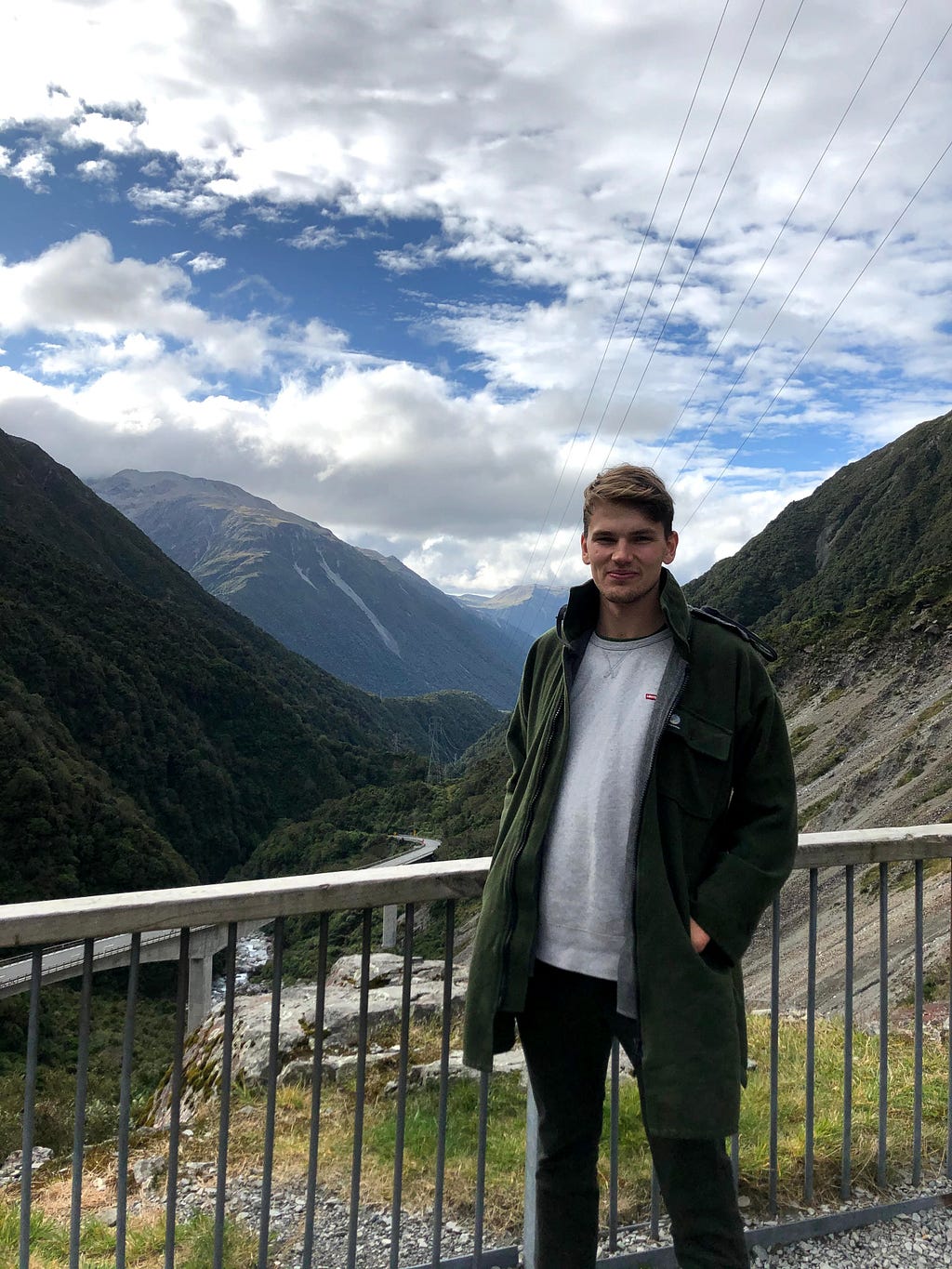
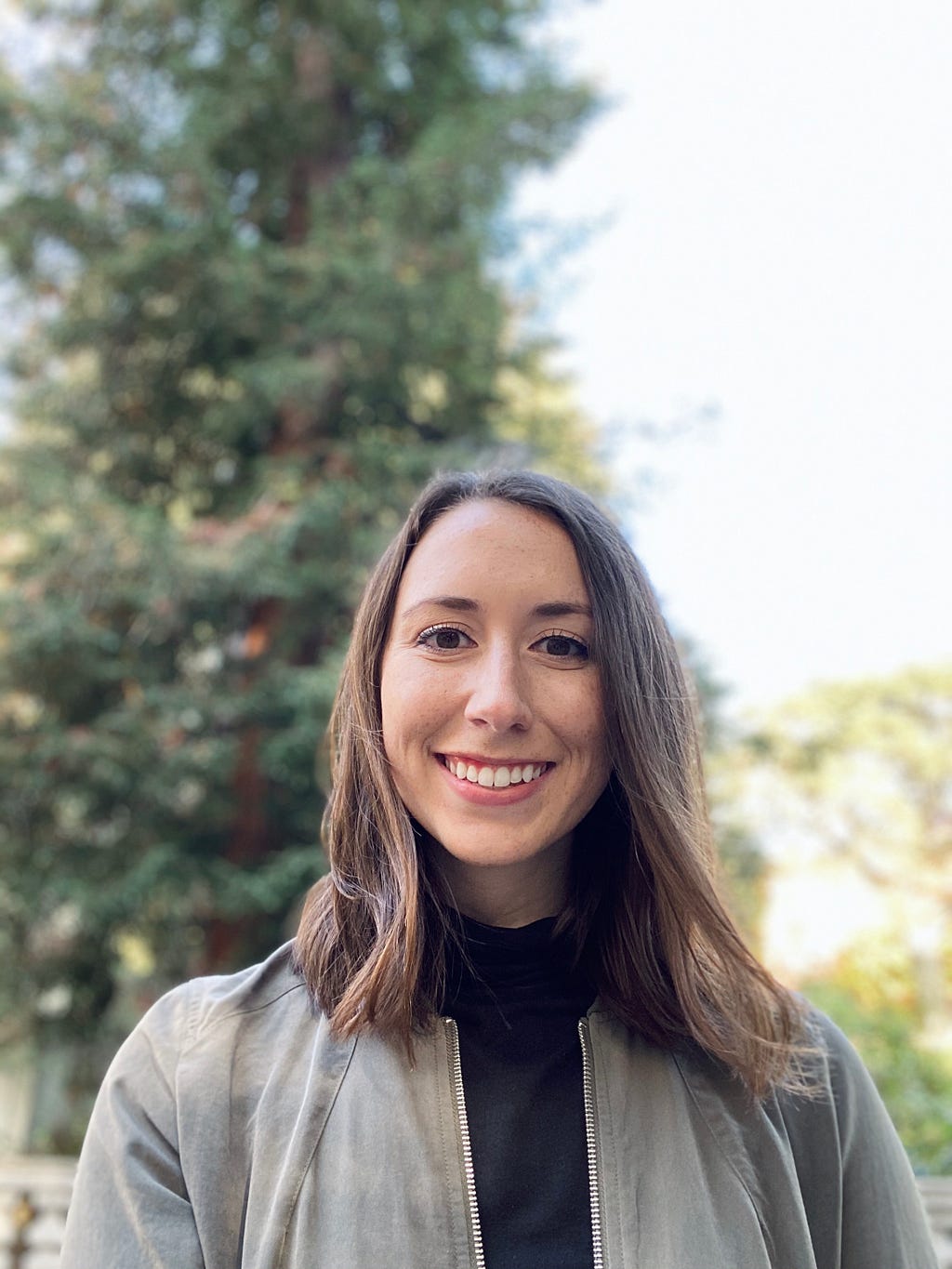
Can both of you introduce yourselves and give a brief overview of your path to the MEng program?
Anna: I grew up in Mississippi and went to Vanderbilt, located in Nashville, Tennessee, for my undergraduate degree in biomedical engineering. I studied biomedical engineering and actually ended up staying to do research at Vanderbilt for a year after that. So from around June 2019 till this program started, I was working at a biomechanics and assistive technology research lab as their staff engineer. I got really excited about the field of sports science and sports tech and I just felt like I didn’t know enough about it. I really wanted to come to Berkeley and actually build up that knowledge base before I potentially jumped over to an industry career. That’s how I got here. What about you, Matt? Matthew: I transferred to Berkeley in 2017 after completing two years of my undergraduate degree at home in New Zealand. I came to UC Berkeley on a rowing scholarship, so I’ve rowed in the varsity men’s rowing team for the last three years now. And that’s where my interest in sports tech comes from. I’m very interested in how the body works and recovery-type things. I don’t know enough technically yet, but I’m enthusiastic about it and it’ll be a really cool area to learn more. But yeah, my path to the MEng program was that I did mechanical engineering here at Berkeley prior to this, and then applied for the program and was very lucky to get in.What about the sports tech field interests you?
Matthew: I think that for me, tweaking performance, like tweaking ergonomic setups for the way that we exercise, is exciting. Machines that can adjust to fit a variety of people well are really exciting and cool — I talk about it all the time with my teammates. It’s a huge part [of exercise] but I think it’s underestimated. People often don’t think about it as much as they should when they’re working out. I see a lot of people riding their bikes and you can just see it’s all set up wrong. Things like that made me really interested in sports technology. Anna: I would also say, there’s a huge area here for innovation, and I feel like it’s largely been unexplored until recently. Especially with fitness trackers now becoming really popular — there’s so much tech that goes into those. So I’m just really interested to see where the field goes in the future. And I think there’s just endless things to learn.“There’s a huge area here for innovation, and I feel like it’s largely been unexplored until recently.”
How did you both decide to become affinity group leaders?
Matthew: I thought it would be fun. I knew that if I signed up for it would force me to get off my butt and organize events, which is great. I need that external motivation to get involved in this space. I like talking to people and organizing things and I haven’t really tried my hand at it. That’s why I thought I’d get on board with Anna and give it a shot. Anna: I’m really interested in sports tech. I didn’t know much about it coming in and I wanted to find a group that felt the same and wanted to learn more about it together. So basically, I just really wanted this small-community-feel where we could learn together.How has it been going this semester? What are some of the things you’ve been able to do?
Anna: It’s definitely tough being remote, but I think we’ve still found some great things to do. One thing we’ve put out twice now is a monthly newsletter, which is a fun opportunity for people to see what’s going on in the field and potentially get to know each other a little bit better through that. We also try to highlight things like upcoming webinars, certain sports tech organizations — just generally letting people know what’s going on in the field since it’s harder to have regular meetings being remote. We’ve also been working on one thing in particular, it’s a speaker panel focusing on prosthetics. That’s this Friday. So that’s the big event for this semester. We’re really excited.Can you expand more on the speaker panel?
Anna: I had previously worked with someone in Nashville who works at a charity that gets children prosthetic devices who can’t typically afford them. I talked to him and he connected me to three others in the field, actually. We’ll have a speaker from a prosthetics device company that actually develops the products, we’ll have people on more of the clinical side, we’ll have [my contact] on the charity side as well. So it’ll be really interesting. I think it was just a matter of Matt and I getting connected with them and setting the date. We’re interested to see who comes and what the questions are. Matthew: It’s interesting to think about who’s going to be there and how the conversation is going to flow. That’s been a good problem to think through for the speaker panel, because you have to predict a bit about how long people will take to say certain things and what sort of discussion they might have and how they might flow off one another. This is a very multifaceted problem, adding in the audience and what they want out of it. It ends up being an interesting compromise between getting the people who come on the panel to talk about what they want to talk about — because, you know, everyone likes to talk about their own thing — and also making sure the audience is getting what they want. I thought about it quite a bit and should be really interesting to see how it turns out. Anna: We’re definitely trying to cater it to all four of the speakers, as Matt’s saying, making sure everyone’s included. It’s kind of turned into a more product development and human factors engineering topic, which I feel like is pretty much designed around the speakers. It’s been fun seeing how it’s shaped out. Note: The speaker panel was held on November 6, 2020.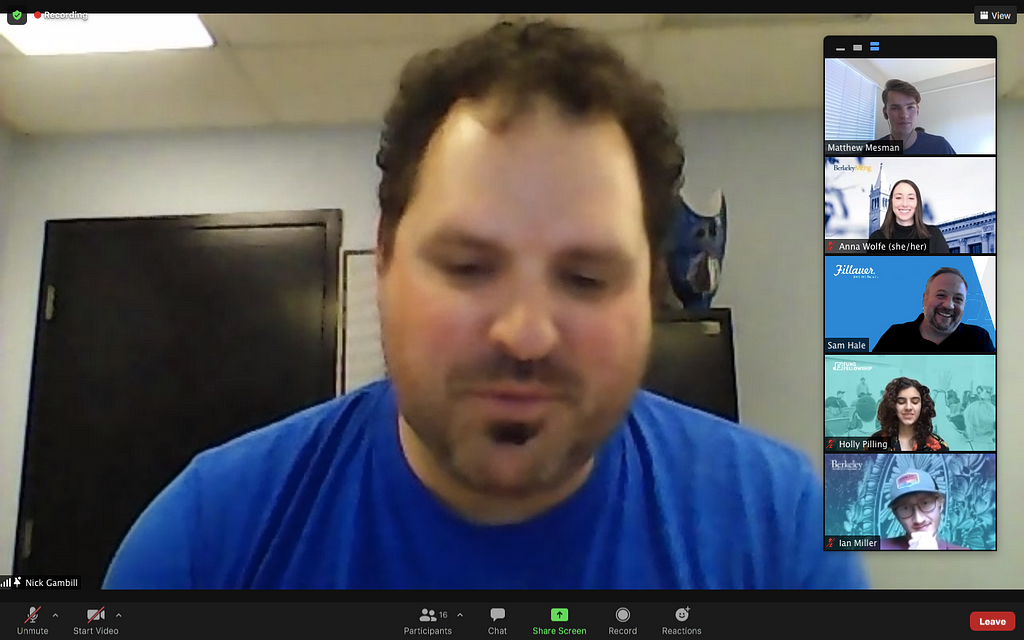
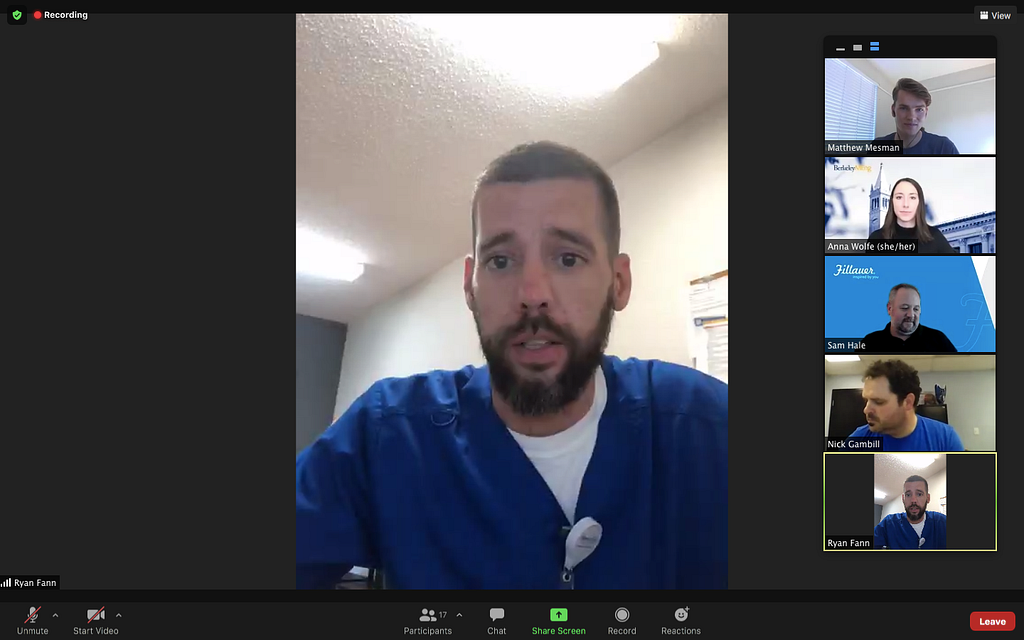
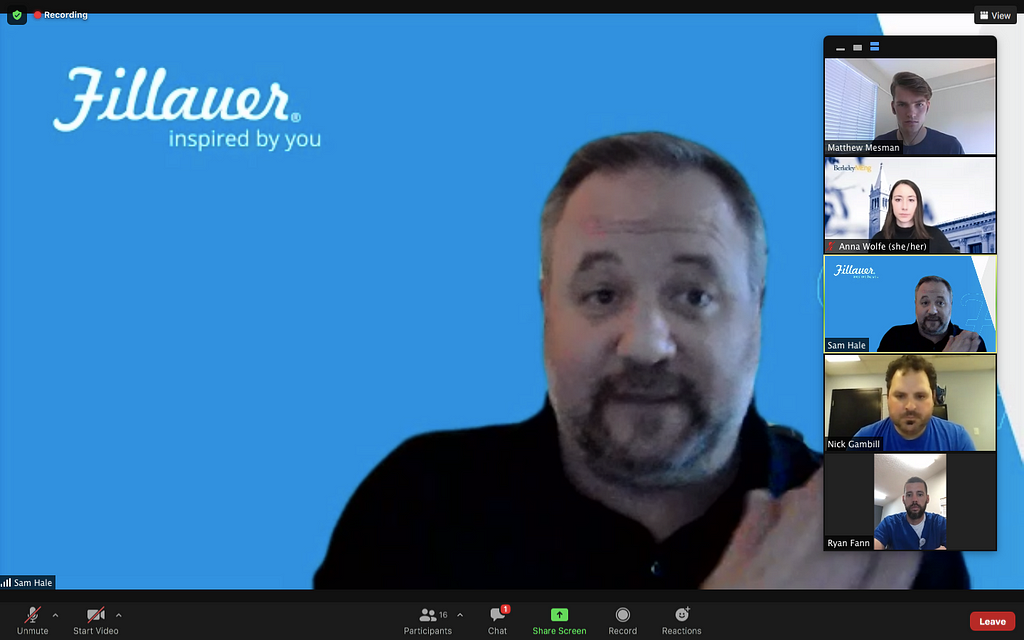
How many people are involved in the group?
Anna: It’s rather small, actually, it’s about six people. But honestly, we don’t have many group events, just because everyone’s pretty spread out. The newsletter goes out to around 14 or 15 people at the moment. We’re definitely trying to grow it. (Editor’s note: Sign up to receive their newsletter!) Matthew: Pandemic times are really weird. I’m sure that things would have been a lot different had we all been here in Berkeley. I shouldn’t think about this too much because it makes me a little bit sad. But we’re stoked to be putting on what we’re putting on and it’s really good practice for whatever else we end up doing. Anna: I think one thing that is a really good thing about being remote, though, is that we’ve had a lot of people that have signed up for the newsletter that aren’t actually in the program. It’s quite a few staff members and I think a few people from the MBA program. That’s one caveat, we are having a larger virtual reach. So that’s a positive for sure.What are your goals for the rest of the year?
Anna: I think it’d be super cool to have maybe one to two more speaker panels throughout the year that are smaller, because coordinating four speakers is kind of difficult. And then I think potentially a design challenge where we can all work together would be really interesting. Matthew: I would really like to have speakers in from some of the companies that I like to use. It’s been hard — I’ve tried reaching out to a lot of people, and it has been hard. That’s going to be a continuing process and hopefully I’ll get some cool people on board to talk.What have you learned from the process of being an affinity group leader?
Anna: It’s definitely different from leading a group project and I learned that pretty quickly, because there’s a lot more of trying to keep people engaged and trying to make sure you’re appealing to every single person’s interests. It’s a different space and it’s not something I’ve done before. It’s been a fun challenge. Matthew: I kind of see it like a marketing problem. You’re competing for people’s time, because they have so many other things to do. So you have to try and sell an idea or event in a way so that they know that it’s going to be beneficial for them. Because again, people have so many ways to use their time. Especially now that a lot of things are virtual, you can tune into all sorts of different things. That’s been a tough one, and one we’re continuing to learn about. Anna: Yeah, finding ways to engage people virtually without adding to their workload is a challenge. With the newsletter, it’s extremely low maintenance, and people can look through it if they would like to. With events like the speaker panel, again, nobody has to prepare anything. So I think it’s just a good way to keep people engaged without asking for more commitment.Do you have any personal or professional goals you’d like to share?
Matthew: I’m really excited to try and stay within the states, because I’m an international [student]. I would love to work at one of those sports tech companies, or in consumer electronics/wearable tech. Ideally, it’d be really cool to be working on ergonomic solutions and sports equipment. Or rehab equipment, that would be awesome. Those jobs are pretty sparse and I’m still learning more about the industry. And this [group] is a good way to learn about it. Anna: For me, I definitely want to move into industry, looking at sports science or anything where I can be working one-on-one with participants doing some sort of biomechanical analysis. I just really like to study human movement. And there’s a lot happening in the space of sports equipment and sports products where they need this kind of data analyzed to see if their product is really working. That would be a really innovative space to work in. Connect with Anna and Matthew // As told to Lauren Leung Learn more about the Fung Institute at funginstitute.berkeley.edu.Meet the MEng students behind the Sports Tech affinity group was originally published in Berkeley Master of Engineering on Medium, where people are continuing the conversation by highlighting and responding to this story.




